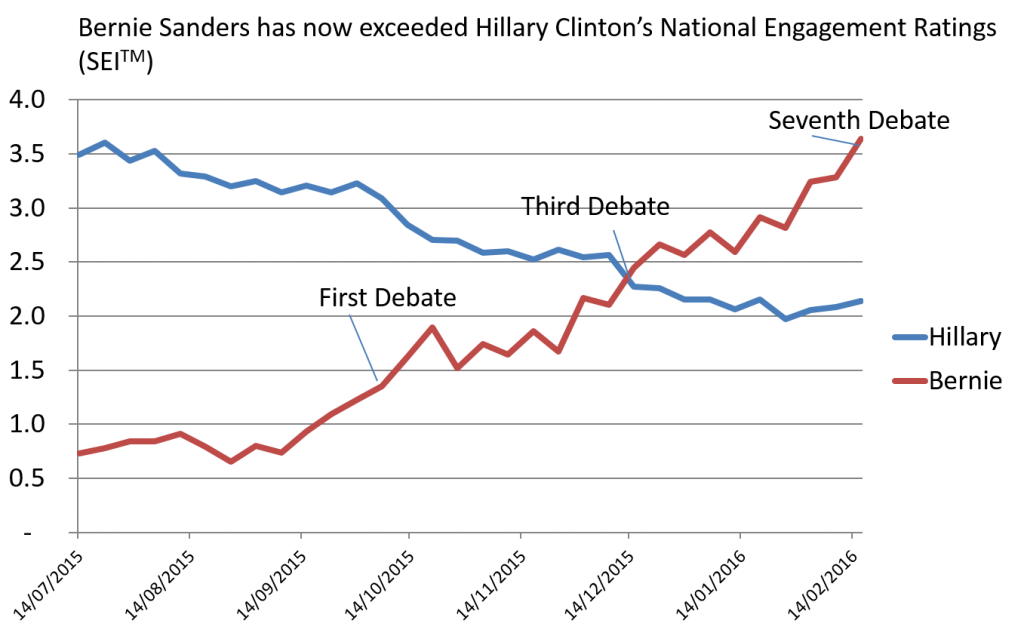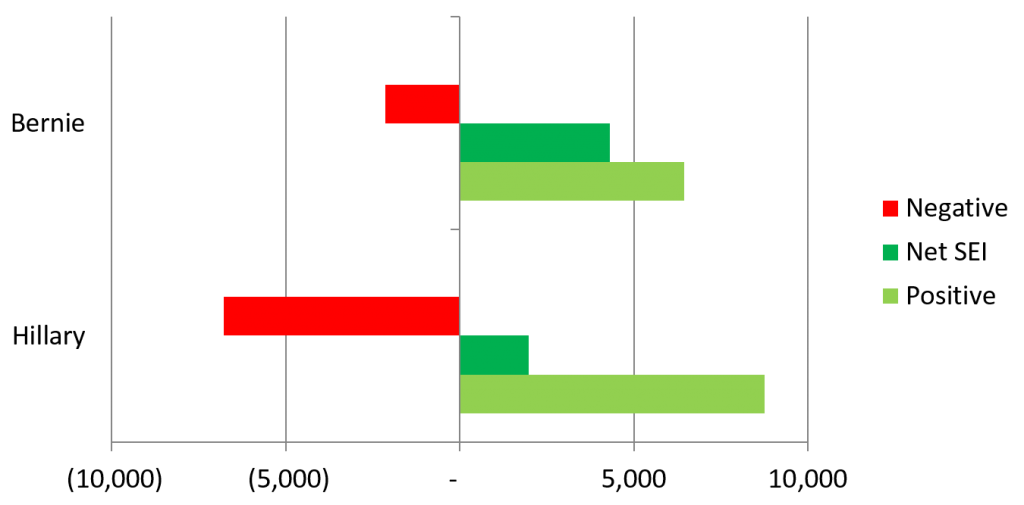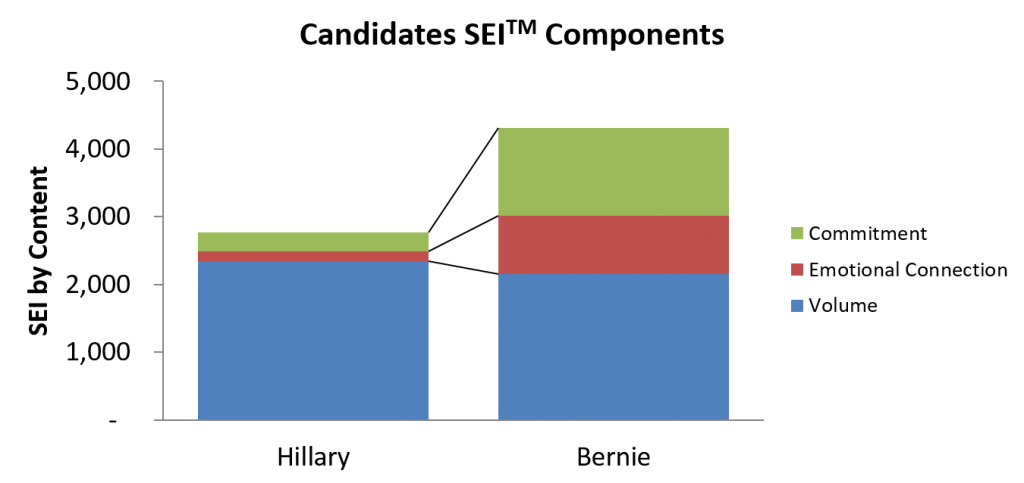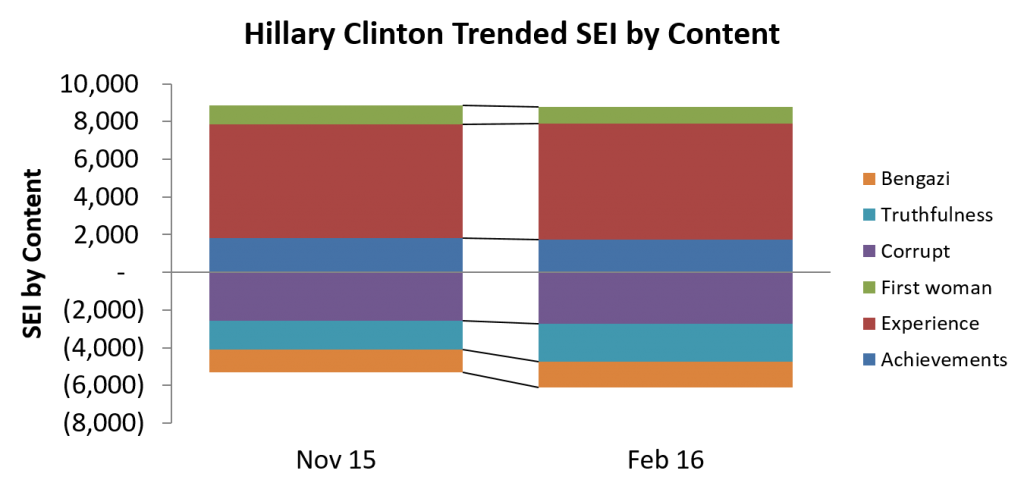 Our Thinking
Our Thinking
Hillary & Bernie: Social Analytics for US Political Campaigns
Applying innovative social media analytics to political campaigns is an interesting endeavor because it applies the actual words of voters towards understanding political views, engagement and intentions. The purpose of this paper is to illustrate the value of what can be done and not to make any political pronouncements or specific conclusions.
In this paper, we will be applying a unique approach to social media analytics and focusing on the Democratic campaigns of Hillary Clinton and Bernie Sanders. Our first step, here, involves mining hundreds of thousands of social media conversations about these respective campaigns, beginning in mid 2015.
Our approach is unique in that it scores textual conversations using “linguistic rules and language structure”. This approach divides these comments into many exclusive themes and scores or translates textual conversations on these political candidacies into a metric called the Semantic Engagement Index or SEITM. The fundamental thesis of this approach goes beyond word counting found in many social analytics approaches. Here the major thesis presumes that it is not just words that matter but how those words are communicated and the specific context of the conversation.
The approach we have shown here has a special means of not just measuring the volume of comments but also the level of emotion linked to each candidate and the level of expressed or inferred commitment. Based on the higher levels of these latter two elements, Sanders overall SEITM rating crossed and exceeded Hillary’s in December 2015, as shown below.
SEITM Positive/Negative Scores
When we decompose the scores across tonality or sentiment-types, we see that Hillary has significantly more negative engagement than Bernie.
Net SEITM Scores by Candidate
Because our method can score the level of positive emotion and inferred commitment behind a candidate, we see an interesting contrast between Hillary and Bernie. While Hillary still leads in the volume of comments, a much larger proportion of Bernie’s supporters show more positive emotion and commitment behind their candidate.
Likewise, for each candidate, we can decompose their SEITM scores into specific content or reasons behind their supporter’s engagement towards their candidate. As shown below, Hillary’s overall engagement is trended below and we see the negative driver of “truthfulness” driving much of her overall SEITM or engagement decline.
A key question or issue with respect to the SEITM metric and approach shown here, is how well can it predict outcomes, below, we show how well the SEITM actually fits a historical composite of 12 different political polls. The answer seems to be quite promising and perhaps we could say that while it might not be perfect, could it be any worse than current political polling in predicting outcomes?
If we look at Bernie’s data, we could also say that his momentum is such he could become the leader in voter preference sometime this summer.
Social Analytics and Political Intelligence
Social media analytics, when applied correctly, can generate deep and valuable insights into various political candidates and campaigns. In this focused example, we find that, while Hillary Clinton has an advantage in numbers (of comments), she shows vulnerabilities on several elements, including more overall negatives, less commitment and positive emotional connections. Some of these negatives are being driven by some perceived issues with “truthfulness”.









